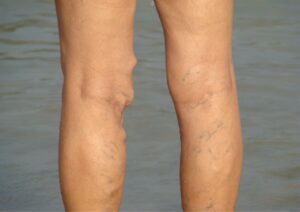Pulmonary embolism (PE) is a serious and potentially life-threatening condition that occurs when a blood clot travels to the lungs, blocking one or more arteries. It often results from a deep vein thrombosis (DVT), a condition where blood clots form in the deep veins of the legs or other parts of the body. PE can cause severe breathing problems and requires immediate medical attention. The urgency of full anticoagulation treatment for patients with suspected acute pulmonary embolism is critical, and timely intervention, including thrombolytic therapy in cases of hypotension, is essential to mitigate mortality.
What is Pulmonary Embolism (PE), and How Does It Occur?
A pulmonary embolism happens when a blood clot (or sometimes other substances like fat or air) blocks a pulmonary artery in the lungs. This blockage restricts blood flow in the blood vessels, causing oxygen deprivation in the affected areas of the lungs, which can result in damage to lung tissue and heart strain. It’s often caused by a DVT that breaks loose and travels to the lungs.
What Are the Causes and Symptoms of Pulmonary Embolism?
Pulmonary embolism is usually caused by blood clots originating in the legs (DVT), though clots can form in other parts of the body. Risk factors include prolonged immobility, surgery, trauma, certain medical conditions, and genetic factors like Factor V Leiden. Pulmonary embolism symptoms can vary based on factors such as clot size and the individual’s overall health. Common symptoms include:
Sudden shortness of breath
Chest pain (which may worsen with deep breaths)
Rapid heart rate
Coughing, sometimes with blood
Lightheadedness or fainting
How Does a Blood Clot Cause a Pulmonary Embolism?
When a blood clot forms in a deep vein, typically in the leg (DVT), it can break off and travel through the bloodstream. If the clot lodges in the pulmonary arteries of the lungs, it causes a pulmonary embolism. This can block the flow of oxygenated blood to the rest of the body.
What Happens to Your Body After a Pulmonary Embolism?
A PE can damage the lungs and affect heart function, especially if large or multiple clots are involved. Pulmonary infarction occurs when blood flow to portions of the lung is blocked, particularly during a pulmonary embolism, leading to the death of lung tissue. In severe cases, a massive PE can be fatal due to the strain it puts on the heart and the body’s inability to get enough oxygen. Long-term complications can include chronic thromboembolic pulmonary hypertension (CTEPH), which can lead to heart failure.
What is the Relationship Between a DVT and a PE?
Deep vein thrombosis (DVT) refers to blood clots that form in the deep veins, usually in the legs. If a DVT clot dislodges, it can travel to the lungs and cause a PE. This link between DVT and PE is crucial because preventing and treating DVT can significantly reduce the risk of PE.
How is Pulmonary Embolism Diagnosed and Treated?
Diagnosing a pulmonary embolism involves imaging tests such as a CT pulmonary angiogram, ventilation-perfusion (V/Q) scan, or ultrasound for detecting DVT. Blood tests like D-dimer levels may also help. Pulmonary embolism treatment is urgent and complex, often involving anticoagulants (blood thinners), thrombolytic therapy (clot-busting drugs), and in severe cases, surgical removal of the clot (embolectomy). Long-term treatment may include anticoagulants to prevent further clots. It is crucial to have a pulmonary embolism treated in a hospital setting for careful monitoring and to manage potential complications effectively.
Can a Bruise Cause Pulmonary Embolism?
No, a bruise itself won’t cause a pulmonary embolism. However, trauma leading to a deep vein injury can increase the risk of developing a clot (DVT), which in turn may lead to a PE.
Can an Undiagnosed Pulmonary Embolism Last Six Years?
While rare, a small, undiagnosed PE may persist or lead to chronic complications over time. In such cases, individuals may experience lingering symptoms like shortness of breath or fatigue. However, large untreated PEs typically cause more immediate and life-threatening symptoms.
Can Varicose Veins Lead to Blood Clots?
While varicose veins alone don’t usually cause clots, they can increase the risk of superficial thrombophlebitis, which can sometimes lead to DVT, raising the risk of PE.
What is Deep Vein Thrombosis (DVT) and How is It Treated?
DVT or pulmonary embolism occurs when a blood clot forms in the deep veins, usually in the legs, posing significant risks and implications such as high incidence and potential fatality. It’s treated with anticoagulants to prevent the clot from growing and to reduce the risk of it breaking off and causing a PE. In severe cases, clot removal procedures or filters to prevent the clot from traveling to the lungs may be used.
What is a Saddle Pulmonary Embolism?
A saddle pulmonary embolism is a large clot that straddles the bifurcation of the pulmonary arteries. It is particularly dangerous because it can block blood flow to both lungs, increasing the risk of heart failure.
How to Prevent Pulmonary Embolism and DVT?
Prevention focuses on staying active, especially during long periods of immobility (like on flights or long car rides), maintaining a healthy weight, wearing compression stockings, and taking anticoagulants if prescribed. Chronic obstructive pulmonary disease (COPD) is one of several medical conditions that elevate the risk of developing a pulmonary embolism. Elevating your legs and staying hydrated can also help reduce the risk of clots.
How is Deep Vein Thrombosis Diagnosed and Felt?
DVT is often diagnosed using ultrasound. Symptoms include swelling, pain, warmth, and redness in the affected leg. Some people describe the sensation as a cramp or heavy ache in the leg.
Can You Get a Blood Clot from a Burst Varicose Vein?
It’s uncommon, but a burst varicose vein can sometimes lead to superficial blood clots. While these clots typically aren’t dangerous, they can raise the risk of developing DVT.
What Happens to Your Lungs After a Pulmonary Embolism?
The impact of pulmonary embolisms on the lungs depends on the size and number of clots, making prevention and rapid treatment strategies crucial to avoid severe complications. In mild cases, the lungs may recover fully. In severe cases, lung tissue may be damaged, leading to long-term respiratory issues or chronic thromboembolic pulmonary hypertension (CTEPH).
Can Deep Vein Thrombosis Be Cured?
DVT can be treated, but the risk of future clots remains for some people. Long-term management with blood thinners may be necessary to prevent recurrence.
Why is Pulmonary Embolism Fatal?
PE can be fatal because it obstructs the pulmonary arteries, preventing blood from reaching the lungs and reducing oxygen supply to the body. This can cause heart failure or death if untreated.
How to Remove Blood Clots and Clean the Veins?
Treatment for blood clots includes anticoagulants to prevent clot growth, thrombolytic therapy for clot breakdown, and sometimes surgical interventions like embolectomy or catheter-based removal.
Conclusion
Pulmonary embolism is a serious condition linked to blood clots, primarily caused by DVT. Recognizing symptoms early and seeking prompt medical care is crucial to prevent life-threatening complications. Prevention strategies, such as staying active, wearing compression stockings, and taking prescribed medications, can help reduce the risk of both DVT and PE.









